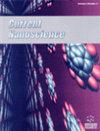用新加坡樱桃提取物制备的碳点荧光测定 Fe3+ 离子
IF 1.4
4区 材料科学
Q4 BIOTECHNOLOGY & APPLIED MICROBIOLOGY
引用次数: 0
摘要
由于水和土壤污染水平不断上升,需要开发经济实惠、生态上可接受的重金属检测和去除技术。碳点(CD)因其独特的性质,已成为一种有前途的重金属检测纳米材料。在本研究中,我们报告了一种以 Muntingia calabura 果实提取物为前体生产 CD 的简单而环保的方法。通过使用各种表征技术,包括场发射扫描电子显微镜(FE-SEM),对 CD 的尺寸、结构和光学特性进行了分析、这些表征技术包括场发射扫描电子显微镜(FE-SEM)、能量色散 X 射线光谱(EDS)、元素图谱(E-map)、紫外可见光谱、X 射线衍射(XRD)、傅立叶变换红外光谱(FT-IR)、光致发光(PL)光谱和透射电子显微镜(TEM)。此外,还使用 Zeta 电位和 DLS 分析来表征 CD。合成的 CD 显示出强烈的荧光发射,使其适用于选择性测定 Fe3+ 离子。从 Muntingia calabura 果实提取物中绿色合成的 CD 为开发用于检测环境和生物样品中 Fe3+ 离子的高效纳米探针提供了一种可持续的方法。本文章由计算机程序翻译,如有差异,请以英文原文为准。
Fluorometric Determination of Fe3+ Ions using Carbon Dots Prepared from the Extract of Singapore Cherry
The development of affordable and ecologically acceptable technologies
for heavy metal detection and removal is required due to the rising levels of water and soil
pollution. Carbon Dots (CDs) have emerged as a promising nanomaterial for heavy metal detection
due to their unique properties. In this study, we report a simple and eco-friendly method to
produce CDs using Muntingia calabura fruit extract as a precursor.
The hydrothermal method produced a well-defined size, structure, and optical properties
of CDs, which were analyzed by using various characterization techniques, including Field
Emission Scanning Electron Microscopy (FE-SEM), Energy Dispersive X-ray Spectroscopy
(EDS), Elemental mapping (E-map), UV-visible spectroscopy, X-ray diffraction (XRD), Fourier
Transform Infrared spectroscopy (FT-IR), Photoluminescence (PL) spectroscopy, and Transmission
Electron Microscopy (TEM). Additionally, Zeta potential and DLS analysis were used to
characterize the CDs.
As-synthesized CDs exhibited strong fluorescence emission, making them suitable for
the selective determination of Fe3+ ions. The detection limit was found to be 3.6 μM for Fe3+
ions, which highlighted the potential application of as-prepared CDs in environmental monitoring.
The green synthesized CDs from Muntingia calabura fruit extract provided a sustainable
approach for developing efficient nanoprobes for detecting Fe3+ ions in environmental
and biological samples.
求助全文
通过发布文献求助,成功后即可免费获取论文全文。
去求助
来源期刊

Current Nanoscience
工程技术-材料科学:综合
CiteScore
3.50
自引率
6.70%
发文量
83
审稿时长
4.4 months
期刊介绍:
Current Nanoscience publishes (a) Authoritative/Mini Reviews, and (b) Original Research and Highlights written by experts covering the most recent advances in nanoscience and nanotechnology. All aspects of the field are represented including nano-structures, nano-bubbles, nano-droplets and nanofluids. Applications of nanoscience in physics, material science, chemistry, synthesis, environmental science, electronics, biomedical nanotechnology, biomedical engineering, biotechnology, medicine and pharmaceuticals are also covered. The journal is essential to all researches involved in nanoscience and its applied and fundamental areas of science, chemistry, physics, material science, engineering and medicine.
Current Nanoscience also welcomes submissions on the following topics of Nanoscience and Nanotechnology:
Nanoelectronics and photonics
Advanced Nanomaterials
Nanofabrication and measurement
Nanobiotechnology and nanomedicine
Nanotechnology for energy
Sensors and actuator
Computational nanoscience and technology.
 求助内容:
求助内容: 应助结果提醒方式:
应助结果提醒方式:


